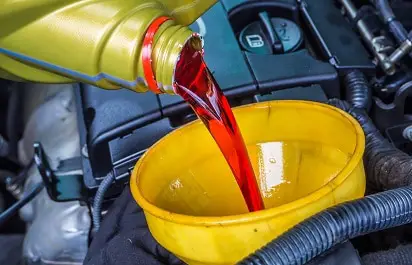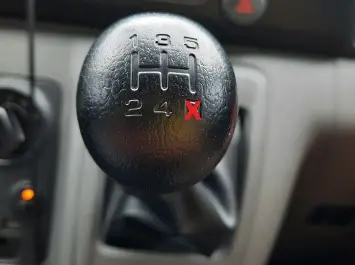Many vehicles get transmission problems at one time or another, and cargo vans are no exception. Often when a cargo van won’t go in reverse, it can be a daunting experience. Perhaps you are in the road and wanted to reverse into a parking spot or are stuck behind a stalled vehicle.
All is not lost though, as it may not be a new transmission which is needed. In fact sometimes you can easily solve the problem on your own.
Here are the main reasons why a cargo van won’t reverse:
- Transmission Fluid Level Low – Check fluid level
- Transmission Fluid is Dirty – Check for grit or dirt
- Incorrect Transmission Fluid Pressure – Check transmission line pressure
- Transmission Selector Switch Faulty – Try selecting reverse several times
- Poor Linkage – Adjust if needed
These are all actions you can take yourself to determine what the problem is and if you will need assistance.
Hopefully one of these will solve your problem but even if it does, as the transmission is an essential part of your van, you should still get a professional to confirm the problem will not return too soon.
Transmission Fluid Level Low

Insufficient transmission fluid will cause the gears to not be adequately lubricated and overheat.
Often the first sign of this is when the vehicle is placed in reverse. However, if the problem is not addressed other gears will also start to give problems.
It is of course possible to drive without reverse, but if you do not add transmission fluid, even driving forward will become difficult and eventually impossible.
Check transmission fluid levels on a regular basis, and if the level needs to be topped up regularly, it could be that there is a leak.
Unlike regular oil, transmission fluid is flammable, and so if the leaking fluid went onto the exhaust pipe, it could start a fire. This could mean you have more than a transmission problem to deal with.
If there are oily patches under your van, remember that transmission fluid is red in color, so darker patches may be engine oil or hydraulic fluid. However, if there are signs of any leaks at all, it is best to check all three.
Transmission fluid leaks can occur in the pan or gasket, at the torque converter, the lines from the radiator, or there may be bad seals in the transmission itself.
One of the most common occurrences though is with the pan. The pan on a cargo van is located low and so debris from the road can cause punctures which lead to leaking fluid.
Instructions on how to look for other transmission fluid leaks can be found here (1).
Transmission Fluid is Dirty
Even if your transmission fluid is at the recommended level, if it is dirty it could still fail to adequately lubricate the gears.
If the transmission fluid is dirty you will have to empty it, flush the system, and replace clean fluid to the appropriate level.
It is not just dirt which can affect the efficiency of transmission fluid.
If it has a burnt smell or has lost its red color, it needs to change.
If it appears frothy, it has probably been contaminated with coolant and so also needs to be changed.
Checking Transmission Line Pressure
If the transmission fluid line has incorrect pressure, it can allow air to get into the system, causing the pressure to continually drop. This may eventually lead to major transmission problems.
To test the pressure, you will need a pressure gauge which can read up to 300 PSI, and then:
- Place the van in park and engage the emergency brake.
- Locate the pressure port and remove the cap.
- Select the correct size fitment and attach it to the port. Attach the gauge hose to the fitment after it has been secured. This saves damaging the thread on the port, which can be expensive to remedy.
- Check the pressures when the engine is in idle and then again through each of the gear positions.
- When testing the pressures through the different gear settings, the throttle should be on full for a second. This is why you have engaged the emergency brake but always ensure you have a little room in front and to the rear of the van before doing these tests.
Full instructions on checking the transmission line pressure and what the readings should be can be found here (2).
Transmission Selector Switch Faulty
This switch is primarily designed to stop the engine from being started other than when park or neutral is selected. When it starts to become faulty, it may not send correct messages to the engine as to which gear has been selected. This can result in the engine not recognizing the reverse selection.
Although it may sometimes respond correctly if the reverse is repeatedly selected, it will still need to be replaced at the first opportunity.
Poor Linkage
There is a cable which connects the transmission selector switch to the transmission which is referred to as the selector lever linkage. If this linkage is damaged or obstructed in any way, it could lead to wrong messages being sent from the transmission to the engine.
If the linkage is the problem, usually the engine light will come on.
Sometimes the linkage may only need to be adjusted. You can do this yourself if you do not mind getting under the van.
The linkage is located next to the transmission and can be identified by a yellow clip on older models or a tan clip on newer models. Remove the clip, set both the transmission and the driver’s transmission stick to park. Tighten the cable and then re-insert the colored clip.
There are other problems which can cause a cargo van not to go in reverse, but these will generally require you to get a professional mechanic.
Transmission Worn Out

Over time it is possible for a transmission system to wear out. If this happens one of the first signs may be the cargo van won’t go in reverse, but sooner rather than later other problems will occur.
Professional transmission specialists can restore many transmission systems. However, as your van has already failed to go in reverse, it probably means you are too late for that. This means you will have to either have the transmission rebuilt or get a new one.
Transmission Fluid Pump
Although there could be a problem with the transmission fluid pump, usually that would be indicated by no gears working, not just reverse.
Problem with the Engine
Not often, but sometimes when a cargo van won’t reverse it is not even a problem with the transmission, instead it is with the engine.
If you have checked the different elements of the transmission system and still not found the problem, check the engine.
In order for the engine to allow the transmission to operate smoothly, the engine gaskets must be in good shape. Worn out engine gaskets can therefore lead to transmission problems, including not moving in reverse.
Avoiding Transmission Troubles

Checking for transmission fluid leaks, levels and contaminants, as well as checking the line pressure is relatively easy and inexpensive.
All these checks can save a lot of money having the transmission rebuilt or replaced. You should therefore do these checks regularly, or at the very least at the first signs the transmission is giving trouble.
Cargo vans are equipped with an overdrive light. If this light continuously flashes, it is indicating that there is a transmission problem.
If you have a transmission code reader, it should tell you what the problem is. If not, then you can ask a dealer or any reputable garage to read the codes for you.
Conclusion
I am sure you check your engine oil, lights, and tires regularly, but the transmission is equally important for trouble free driving. The transmission checks may not have to be done as often as the others, but they still need to be done fairly frequently.
As well as being essential for trouble-free driving the transmission is also one of the most expensive parts to replace. Even if a faulty transmission can be fixed, usually it can only be repaired by a transmission specialist. This of course means there will be an additional expense.
Only take the above actions when your cargo van won’t reverse, whenever the transmission seems different somehow, or the OD light starts to flash. It may start to slip or make a grating sound when the gear lever is moved.
All these could be signs that a potentially serious transmission problem may be eminent.
As with most problems, catching a transmission problem at an early stage will assist you in keeping mobile as well as saving you a lot of time, stress and money.


